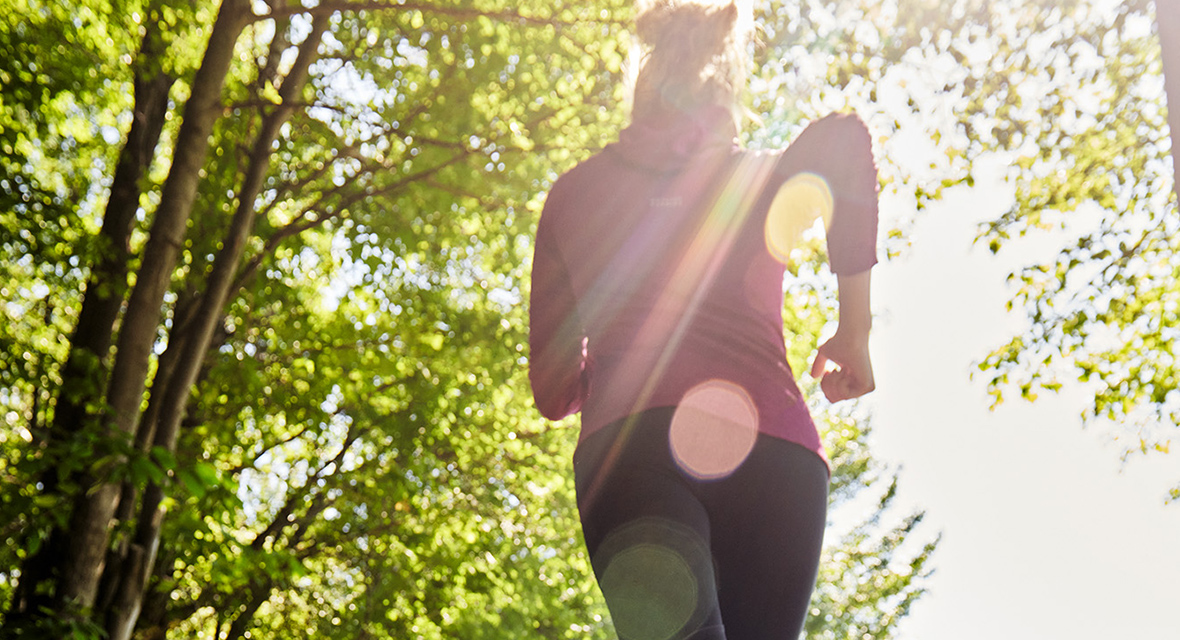
Choosing the best jogging route for you
Whether you’re a beginner or expert runner, several kinds of jogging runs are possible depending on your objectives, your level and what you want to get out of your work out.
Both nature and the city can offer rewarding, challenging runs—when you know how to tackle them! Discover how you can plan a jogging route that keeps you motivated and helps you run better, be more effective and of course enjoy yourself to the utmost.
Slip on your running shoes and follow the guide!
Running in the citymeans exercising caution too
In Canada’s big cities, there are plenty of avid joggers, especially when the weather warms up. Try all the same to jog in places where there are fewer cars and gear up in a prominently visible outfit: rescent colours or reflective bands are ideal to make sure you’re always seen. Always run in the opposite direction of traffic so that you can see vehicles coming and avoid serious accidents.
The asphalt on most roads is a great surface for running, particularly when you’re just starting out, because it helps you find your running stride and measure your efforts. Its rigid surface is also appreciated by more experienced runners because it maximizes your speed. A stable surface also limits the risks of sprains—as long as the road is smooth and properly paved. When you buy your jogging shoes, look for versatility, flexibility and a good grip. You want your shoes to cushion the shocks of your feet hitting the pavement so that your joints are protected.
Runningin the countryoffersadventure!
Routine is the enemy of motivation. If you have the habit of always taking the same trail in the country, next time before you set off, check out a map to see if there’s a different route you can take—and make your run an adventure! Take the time to calculate the trajectory and gear yourself up correctly, especially if you’re running in winter. Watches with GPS are perfect for this kind of itinerary, particularly those that have a “Back to Start” function that helps you trace your steps back easily so you don’t get lost.
In the country, the ground changes a lot: running on gravel, clay or small trails is tough on the ankles. You’ll want to buy flexible shoes designed for different types of ground to be comfortable and safe during your running adventure.
Woods and forest: explore the country with a runner’s stride
If you’re a serious nature lover, you may want to consider jogging among the trees! Be careful though, for you may run across local animals—bears, for example—that may also be surprised to cross your path. Again, gear up to be prominently visible, even in darker places. The forest offers plenty of variable surfaces that strengthen your muscles and joints and improve proprioception and balance. The more experienced the runner, the more fun they’ll have. Beginners on this type of excursion should be careful to avoid sprains. The forest is perfect for endurance runs or for interval training. When it gets bumpy, try out fartlek training—periods of fast running intermixed with periods of slower running—or tackle some slopes.
Make sure however to run occasionally on a flat surface like asphalt or tar so as not to lose the efficiency of your stride. The softer the running surface, the more reduced the elastic response of your foot during push-off, resulting in a shorter stride, a lower pelvis and diminished speed compared to road running. Trail running shoes help you avoid these phenomena as they’re more rigid to compensate for the ground’s softness, plus they offer a better grip.
Keep in mind that the more fun you have, the more motivated you are and the better your performance. It’s a good idea to vary your route, the type of ground, the length of your run or to get out in different weather conditions. The proper gear will optimize you pleasure, safety and comfort. To choose your accessories, don’t hesitate to ask for help from one of the salespeople. Also, make sure to check out our complete article on choosing the best shoes to go with your type of stride.











